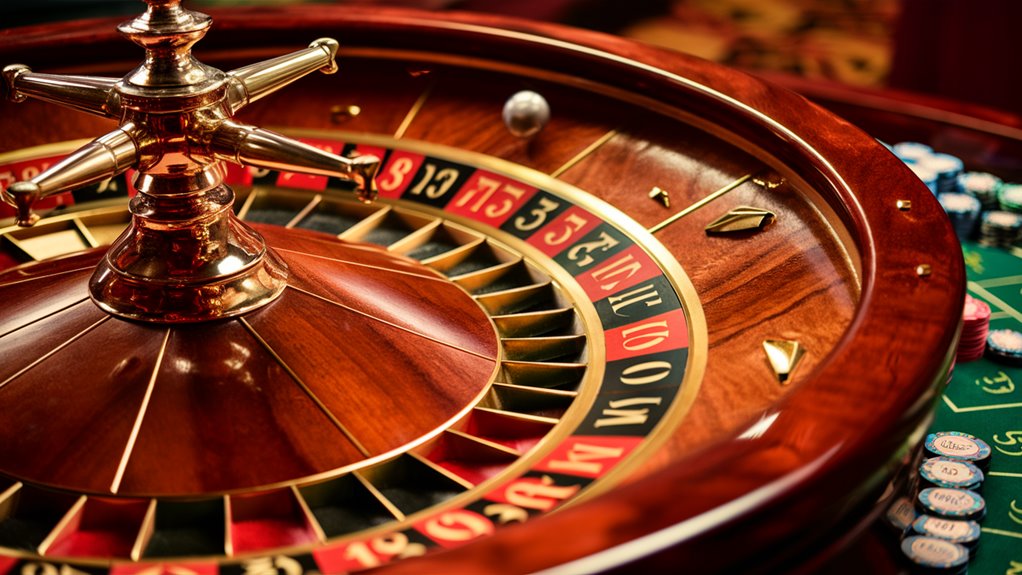The Rise and Tactics of Blackjack

Blackjack, the modern casino game, originated from the Spanish card game Veintiuna. This transformation evolved a simple counting game into a complex battle of skill and luck between player and dealer, with the aim of achieving 21 points without exceeding it.
Today’s Game Ways and Tactics
The contemporary version of blackjack introduces numerous sophisticated tactics. Players utilize the Hi-Lo counting strategy and other mathematical approaches to gain an advantage. Key game moves such as hitting, standing, doubling down, and splitting pairs are fundamental to strategic play.
Top Skills for Winning
Money management is crucial in advanced blackjack strategies. The Kelly Criterion provides a mathematical framework for determining bet sizes, while shuffle tracking enables expert players to predict card placements. These skills, along with perfect basic strategies, assist players in countering the house edge ranging from 0.5-2%. 온카스터디 인증리스트 추천
Pro Advantage Play
Mastering blackjack requires understanding how betting systems, card counting, and strategic decisions interact. Effectively employing these advanced concepts allows players to enhance their edge and seek optimal long-term outcomes at the blackjack table.
The Story of Blackjack
The Start of Blackjack: A Past Look
Old Roots and European Growth
The oldest known game originating from the 1600s in Spain was Veintiuna (twenty-one). The game underwent significant changes in Europe, resulting in key variations such as French “Vingt-et-Un” and British “Pontoon”. Each region contributed new rules and playing styles that shaped modern blackjack.
American Change and Casino New Ideas
During the 19th century US gambling boom, blackjack transformed considerably. Casinos introduced innovative bonus payouts to attract players, including a substantial 10-to-1 payout for hands featuring a black jack (spades or clubs). Although this bonus was eventually discontinued, the name “blackjack” persisted, contributing to the game’s widespread popularity.
Math Roots and Plan Growth
The scientific study of blackjack evolved in the 1950s when Roger Baldwin released the initial basic strategy calculations. This groundbreaking mathematical work laid the foundation for advanced card counting techniques and revealed the game’s intricate reliance on probability. Baldwin’s contributions reshaped perceptions of strategy development and shifted the focus of blackjack from pure chance to a mathematical endeavor.
Big Past Points
- 1600s: First known game of Veintiuna in Spain
- 18th-19th centuries: Development of European variations
- Late 1800s: Introduction of unique bonus payouts in US casinos
- 1950s: Initial publication of mathematical strategy work
- Now: Advancements in sophisticated card counting skills
Basic Rules and How to Play
Simple Blackjack Rules and How to Play
Main Game Aim
The primary objective of blackjack is to surpass the dealer’s hand without exceeding 21 points. This iconic casino game pits players directly against the house in a tactical battle of skill and luck.
Starting the Game
The game begins with players placing their bets before receiving cards. The standard dealing process is:
- Players receive two cards face-up
- Dealer receives one card face-up and one face-down
- Face cards (J, Q, K) = 10 points
- Aces = 1 or 11 points (player’s choice)
- Number cards (2-10) = face value
Choices for Players
After receiving their initial cards, players can choose from the following essential game actions:
- Hit: Request additional cards
- Stand: Retain current hand
- Double Down: Double the bet for one additional card
- Split: Divide matching cards into separate hands
Dealer Rules and Game End
The dealer follows specific rules:
- Must hit with 16 points or less
- Must stand with 17 points or more
- Reveals face-down card after all player actions
- Over 21 points results in a bust
How to Win
Players achieve victory by:
- Acquiring more points than the dealer
- The dealer busting while the player remains at 21 or below
- Ending in a tie (push) with equivalent points
Understanding the Dealer’s Edge
Knowing the Dealer’s Edge in Blackjack

The Basic House Plus
The dealer’s edge in blackjack stems from the requirement for player-first actions, establishing a baseline house edge of 5.5% in standard play. This sequence forces players to complete their moves before the dealer acts, resulting in a substantial statistical advantage. When players bust prior to the dealer’s turn, they forfeit their bet regardless of the dealer’s final outcome.
Dealer’s Set Rules and Game Impact
The dealer’s fixed rules significantly contribute to the house edge. Adhering to strict regulations, dealers must hit on 16 or below and stand on 17 or higher. Despite appearing restrictive, these firm guidelines benefit the casino by compelling players to decide without knowing the dealer’s ultimate hand. Players frequently bust while attempting to achieve higher totals against potentially strong dealer hands.
Lowering the House Plus
Players can significantly reduce the dealer’s advantage by employing basic strategies, lowering the house edge to approximately 0.5%. Strategic mathematical decisions based on the dealer’s up card are crucial for successful play. Choices between hitting, standing, doubling down, and splitting pairs directly influence the player’s ability to diminish the house advantage and enhance potential returns.
Key Card Counting Ways
Needed Card Counting Ways & Top Skills
Basics of Card Counting
Card counting enables players to gain a mathematical edge by accurately tracking cards. The primary goal is monitoring the ratio of high to low cards remaining in the deck, facilitating informed betting decisions.
Hi-Lo System Basics
The Hi-Lo counting strategy serves as the foundation of professional card counting, utilizing these key values: Casino Games Online
- Low cards (2-6): +1 value
- Neutral cards (7-9): 0 value
- High cards (10s, Aces): -1 value
Players maintain a running count by summing these values as cards are revealed on the table. Transitioning to a true count entails dividing by the remaining decks, providing a more accurate betting indicator.
Top Counting Ways
Advanced counting systems like Wong Halves and Hi-Opt II offer increased precision through complex counting techniques:
- Wong Halves: Utilizes fractions for enhanced accuracy
- Hi-Opt II: Employs multi-level counting strategies
- Optimal Indices: Provides precise turnaround points for optimal play
Mastering requires perfect accuracy while maintaining a subtle game appearance. Effective application necessitates practicing with single decks until achieving full deck counts within 30 seconds before progressing to multiple decks.


